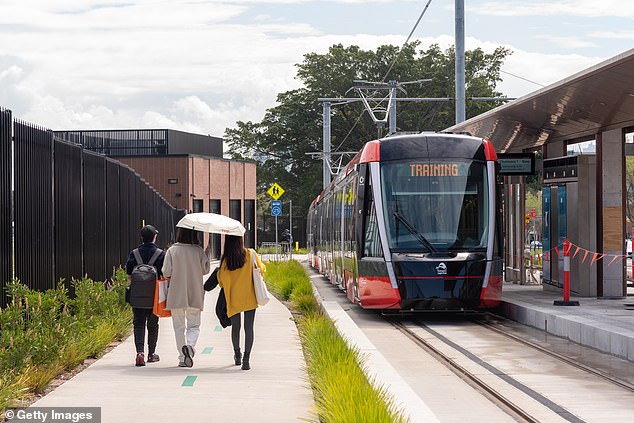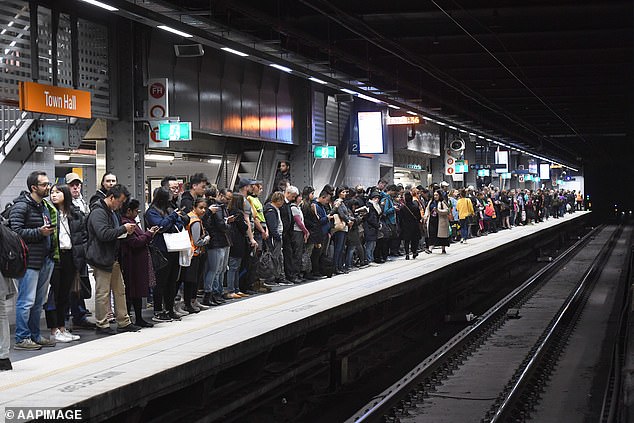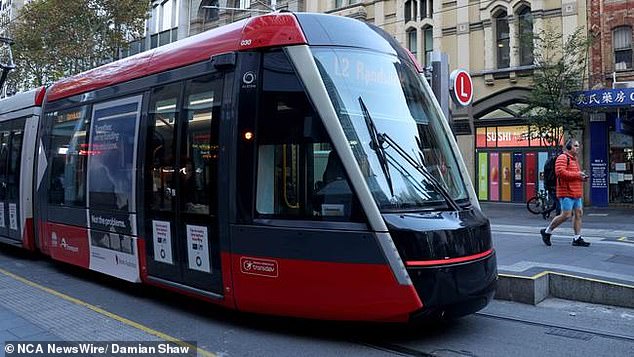Sydney Trains Friday strike CALLED OFF: What is the row about and why did it threaten to cause so much chaos?
A major dispute between Sydney Trains and the NSW government has calmed down, hours before a major strike threatened to bring the network to a standstill.
NSW Premier Chris Minns said the government has agreed to run as many 24-hour train services as possible from Thursday evening this weekend to avoid strike action.
“Intensive negotiations will begin over the next two weeks between the government and unions in NSW, with the intention on all sides reaching a long-term agreement between the state’s rail unions that will last several years,” he said.
The Rail, Tram and Bus Union (RTBU) previously said the strike action would last from Friday morning until mid-morning on Sunday. It was expected to be one of the largest railroad strikes the city has ever seen.
There are a number of major events in Sydney this weekend, including a Pearl Jam concert and six A-League double headers, and major delays and traffic congestion were expected.
About 700,000 people take trains in Sydney every day, so more than a million commuters would have been affected if Sydney trains had been idle for more than 48 hours.
Transport for NSW said the Sydney Trains Intercity Network would also be “affected throughout the weekend, due to protected industrial action”.
‘At this stage, the bans announced by the union will see the heavy rail network closed on Friday, Saturday and into the morning of Sunday.
“This will impact passengers, including those traveling to and from Newcastle, the Central Coast, the Blue Mountains, the Southern Highlands and the Illawarra.”
A strike that threatened to bring Sydney Trains to a standstill this weekend has been called off
Could other public transport accommodate future strikes?
Sydney Metro was not affected by the strikes, but unrelated maintenance work would see the metro closed on Saturday and Sunday.
The NSW government has said it would run extra services until 8pm on Friday to run every four minutes all day, where it would have switched to eight-minute services until the last train from Central to Tallawong at 1.30am on Saturday.
Sydney Light Rail would also have operated throughout the weekend and services will operate at a higher frequency on Saturday between 7am and 7pm, similar to the Friday timetable.
Additional buses would also be deployed to ease the load on the network.
Before the strike was canceled completely, the strike had already been postponed from Thursday so that 40,000 Pearl Jam fans could go home that evening.
But ticket data showed many of the Pearl Jam concertgoers for Saturday were live on the Central Coast and in Newcastle.
‘We ask these people: please pay attention to the ongoing news update in terms of where transport will be provided and make alternative arrangements… we cannot yet be confident that we will have a clear path to Sydney Olympic Park or back home if you leave Sydney is coming,” the transport chiefs warned.
‘The parking lot at Olympic Park is almost sold and the department is looking for more parking space around the stadium.
“Our operators will do their utmost to fill those gaps… we really ask for patience.”

The light rail network would not be affected by the strike and would continue to operate

The strike would have affected well over a million commuters, causing significant traffic congestion
What are the union’s demands?
The RBTU, which represents train drivers as well as cleaners, CCTV operators and technicians across the rail network, is demanding better pay and working conditions.
They want a 32 percent pay increase over four years.
They also want training allowances, an additional 1 per cent employer contribution to pensions and super to be paid during long-term leave, such as maternity leave or workers’ compensation.
The RBTU also wants more flexible working conditions, including a 35-hour working week without pay cuts and better overtime rates.
It also wants annual leave to be increased from four weeks to five weeks for non-shift workers and to six weeks for shift workers.

The light rail network, along with buses, ferries and the Metro, would have covered some of the closure, but delays would still have been a major problem
How did the negotiations fail?
NSW Transport Minister Jo Heylan said there have been more than 50 bargaining meetings between the NSW Government and the union, including 28 where more than 90 delegates were present.
“I believe there is a package on the table for the union to consider,” she said.
“The only way to keep our network running and ensure people can get where they need to go is if the union withdraws their industrial action. … that remains our question to the unions.
“This will significantly disrupt people’s lives and the operation of our city.
“You can’t just click your fingers and change the way a very large system works.”
RBTU NSW secretary Toby Warnes said: “The reason we will not lift the bans at this stage is the ongoing frustrations with the government at not being at the negotiating table.”
The union had given the government an ultimatum to either operate all rail lines 24 hours a day from Thursday to Sunday or risk a complete closure.
The government agreed to a 24-hour process last weekend but said this would not be possible this week. Instead it had proposed operating a 24-hour service between Hornsby and Strathfield.
“Rest assured that our teams are doing their utmost to ensure the system operates reliably,” said Matt Longland, CEO of Sydney Trains.
“It’s a very challenging period as more and more of these industrial bans are introduced.”
The compromise came as the government agreed to run as many 24-hour train services as possible from Thursday evening this weekend.
